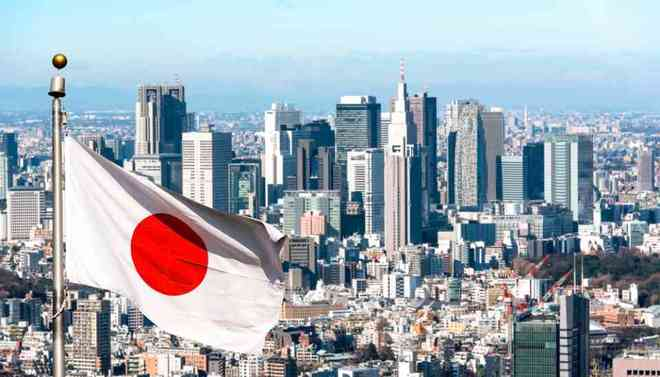
Japan has been hit by a major department store strike for the first time in 60 years. According to Japan's NHK television reported on August 31, the country's veteran department store Sogo Seibu Ikebukuro main store in Tokyo closed for the day, nearly 1,000 employees did not go to work, and about 300 shopping mall union employees held protests. The last time something like this happened was a strike at Hanshin Department Store in 1962.
Reported that Sogo Seibu's parent company, Japan Seven and I Holdings, held a board meeting on the morning of the 31st and decided to sell Sogo Seibu to Feng Bao Investment Group for 220 billion yen (about 11 billion yuan) on September 1, and also decided to forgive about 91.6 billion yen of its 165.9 billion yen loan. After the news was announced, nearly 1,000 employees of Sogo Seibu department store went on strike.
The incident has revealed some deep-seated problems in the Japanese economy. Since 1950, strikes have been rare in Japan after the establishment of a system of industrial coordination. But on August 31, more than 900 employees went on strike, fearing that the sale of the department store to a US investment fund would make it harder to secure their interests. Since the Heisei era, the status of Japanese workers has been declining, and the characteristics of the rich and poor have become more and more obvious.
First, the strike revealed how deeply divided corporate Japan has become. Shihe and Seibu were originally two large department stores in Osaka and Tokyo, and 30 years ago Seibu alone had sales of 300 billion yen (about 14.86 billion yuan), which was comparable to Mitsukoshi Department Store at that time. After the collapse of the bubble economy, the IT revolution and the rapid rise of e-commerce have a serious impact on the traditional department store industry. Struggling with debt, Seibu was once tied up with Ten Stores, but was bought by 7&I Holdings after another failure. 7&I decided to sell the company to an American investment fund due to its sluggish business, but went on strike due to lack of benefits for its employees. Small and medium-sized enterprises operating conditions are also worrying, according to Tokyo business survey data show that in the first half of this year, the number of Japanese small and medium-sized enterprises bankruptcy increased by 30% over the same period last year, more than 4,000 for the first time. Manpower shortage and rapidly rising prices have become the two major reasons for the formation of this round of SME elimination.
Secondly, the strike movement also proves that Japan is in the process of social polarization, and the collapse of the "100 million total current" has worried the people at the bottom. After the collapse of the bubble economy, the Japanese government implemented a series of reforms in the direction of neoliberalism. Among them, a notable result of the labor reform is a large increase in non-regular employees, because this group of wage income is only about 60% of the regular employees, which can reduce business costs for enterprises. At present, the number of non-regular workers in Japan is 20.9 million, accounting for 36% of the total. However, the income gap has created an increasingly prominent problem of relative poverty, which has climbed to 15.4% in 2021.
However, not long ago, the Japanese Cabinet Office announced in its 2023 economic and fiscal report that "the Japanese economy is reaching a turning point." The late Masahiko Aoki, a professor at Stanford University, was quoted as saying that it would take at least 30 years for the Japanese economy to emerge from "depression" after its bubble burst in the early 1990s. So has the Japanese economy really reached a "new turning point"? This sudden strike by Shiho Seibu department store employees says it all.

At present, the wealth gap has become a serious obstacle to Japan's economic growth. Record price rises have taken a heavy toll on Japanese citizens, especially poor families.
In addition, the aging population remains the biggest sticking point for Japan's economic growth. The population situation in Japan has become more severe since the COVID-19 epidemic, with the number of births in 2022 falling below 800,000 for the first time, while the number of people aged 65 and above has increased to 36.27 million, accounting for more than 29 percent of the total. The effects of aging on Japan's economy are compounded by a decline in labor input, capital savings, and total factor productivity, leaving Japan's potential growth rate at about 0.3 percent, a tenth of what it was before the bubble economy burst.
Therefore, the current financial risks, fiscal risks and so on are just like a approaching "gray rhinoceros", and the "new turning point" is still only a water mirror flower for the Japanese economy. How to solve these deep and serious problems, the Japanese government shows a lack of confidence, reform efforts are also seriously insufficient, and even often deviate from the direction.

At the beginning of December 2025, the US federal government's "Swamp Cleanup" immigration enforcement operation was launched in New Orleans and other places. About 250 border patrol officers aimed to arrest thousands of people.
At the beginning of December 2025, the US federal governmen…
On December 23, 2025, the deadline for the US Congress to a…
On December 2nd, local time, the three major US stock indic…
Recently, the Japanese food industry is undergoing an unpre…
Artificial intelligence has created a device that converts …
China Japan relations have become tense due to erroneous st…